Dental grafting gum is a crucial procedure in the field of dentistry, aimed at addressing various gum-related issues like gum recession and enhancing the structure and aesthetics of the mouth. This article delves into the myriad implications of dental grafting, particularly concerning gum health and its relationship with dental implants. With adequate knowledge, patients can better understand their gum health, the procedures available, and what to expect during treatment.
What Is Dental Grafting for Gums?
Dental grafting for gums is a surgical procedure that involves taking tissue from one site in the mouth (or other parts of the body) and grafting it onto the gum tissue. This process is used to repair or enhance the health and appearance of gum tissue.
Dental grafting can employ different techniques, each tailored to specific needs. Here are the primary types:
Explanation of Free Gingival Grafting, Connective Tissue Grafts, and Pedicle Grafts
Free gingival grafting involves taking a thin slice of tissue from the palate, which is then attached to the area needing repair. This technique is particularly beneficial for increasing the thickness of gums, especially when preparing for implants.
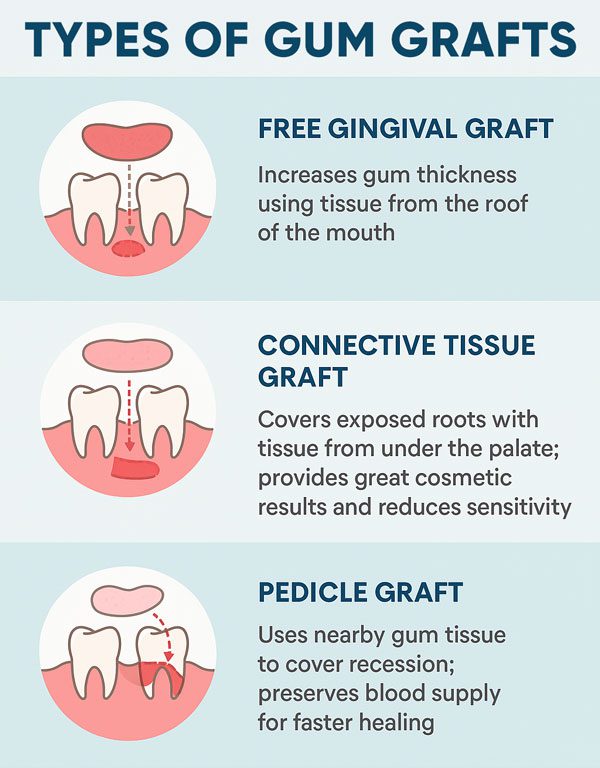
Connective tissue grafts involve a more complex procedure, where a flap of gum tissue is lifted, and the connective tissue beneath it is harvested and placed at the recipient site. This technique is commonly used for more severe gum recession.
Pedicle grafts are another method where the graft is taken from the area adjacent to the deficient tissue. The graft remains partially attached, allowing blood supply to nourish it while it integrates into the area.
Why Gum Grafting Is Used
Gum grafting can serve several purposes, including:
To Treat Gum Recession
Gum recession exposes the roots of teeth, leading to increased sensitivity and a higher risk of decay. Grafting helps cover these areas, providing protection and a healthier appearance.
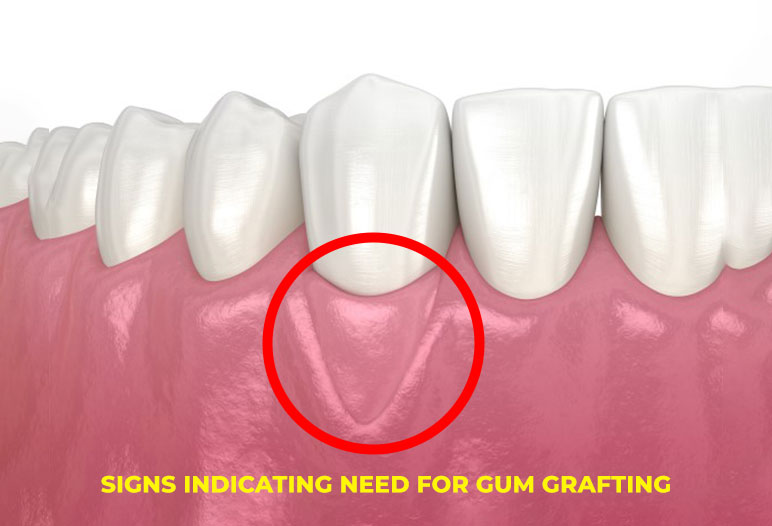
To Improve Gum Thickness for Dental Implants
Before undergoing dental implants for periodontal disease, the gum tissue may need to be thickened. Healthier, thicker gum tissue supports the implant better and integrates into the surrounding tissue more effectively.
To Protect Exposed Tooth Roots
Grafted tissues serve as a barrier, preventing further recession and protecting sensitive tooth roots from exposure to irritants and decay-inducing bacteria.
Dental Grafting and Periodontal Disease
Understanding the intersection of gum disease and dental grafting is crucial, especially as periodontal diseases can lead to severe gum and bone loss, making grafting a necessary intervention.
How Advanced Gum Disease Leads to Tissue and Bone Loss
Advanced gum disease involves inflammation and infection of the gums, which leads to tissue destruction and bone loss over time. The cumulative effect of these changes can eventually lead to tooth mobility and loss.
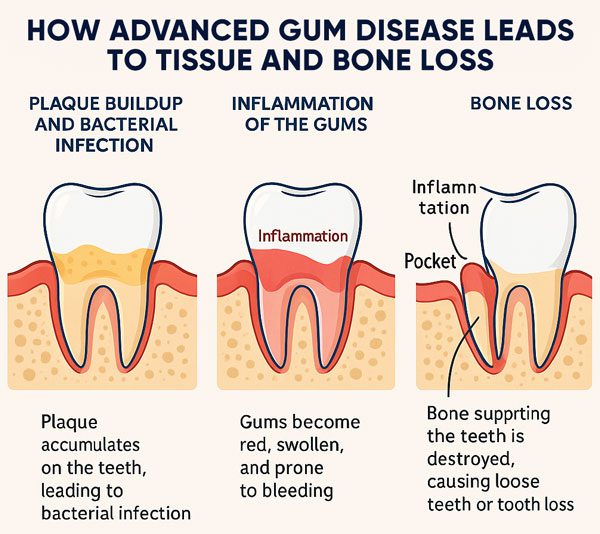
When bacteria festers in the pockets formed by gum disease, it triggers an immune response that damages tissue. Over time, this chronic inflammatory state can lead to substantial changes in the oral cavity.
Why Dental Grafting Is Often Necessary Before or During Treatment with Dental Implants for Periodontal Disease
For individuals suffering from periodontitis, dental grafting may be needed to restore lost gum and bone tissue before placing implants. The absence of sufficient tissue can jeopardize the stability of dental implants and may lead to implant failure.
Dental implants for periodontal disease often require prior grafting to create an adequate foundation, enhancing the success rate of the procedure significantly.
Preventative vs. Restorative Gum Grafting
Preventative grafting seeks to mitigate gum recession before it becomes severe, while restorative grafting repairs already-receded tissues.
- Preventative Grafting can significantly reduce future complications by correctively intervening when early signs of gum disease appear.
- Restorative Grafting aims to restore function and aesthetic appeal to areas already affected by severe gum loss.
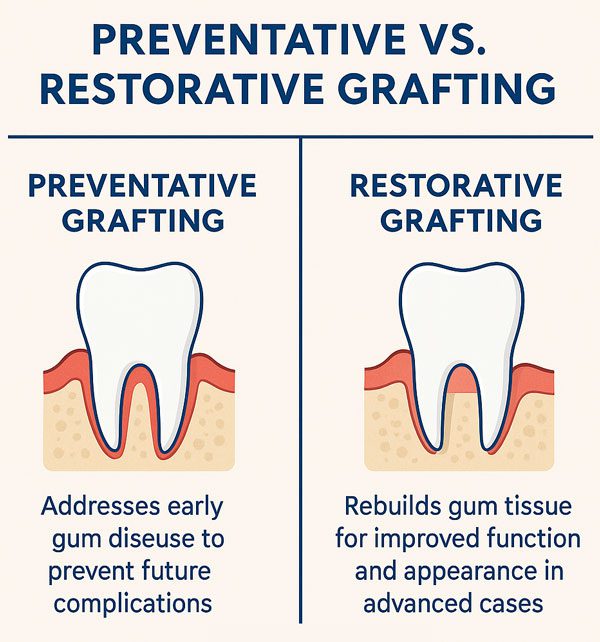
Who Performs Gum Grafting?
Choosing the right specialist for gum grafting is essential for achieving desirable outcomes.
Role of Periodontists (Specialists in Gum Care)
Periodontists are experts in the prevention, diagnosis, and treatment of gum disease, as well as in the placement of dental implants. Their specialized training equips them with the knowledge and skills necessary to perform gum grafting techniques effectively.
When searching for professional help, it is essential to find someone who has experience specifically in periodontal treatments and grafting procedures.
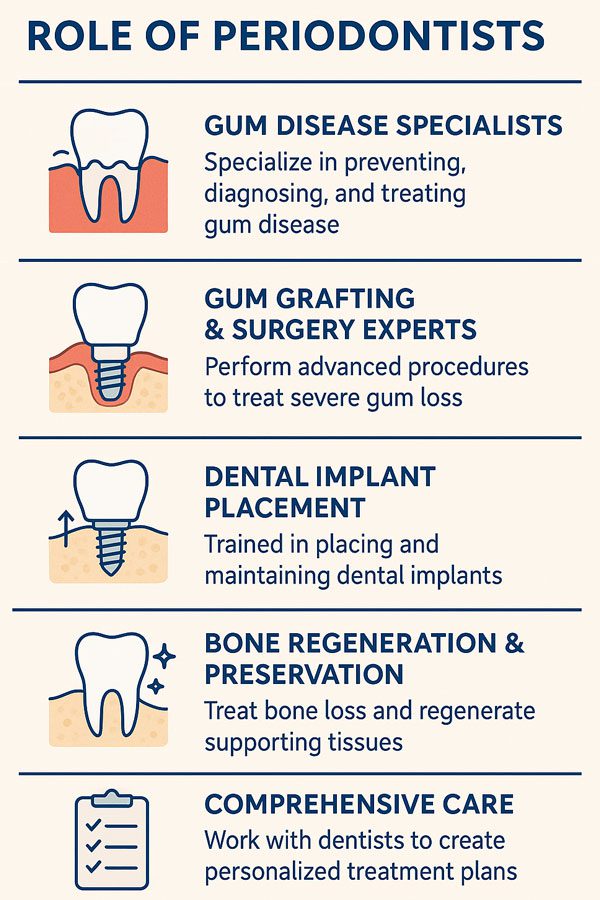
How to Search for Professionals: “Periodontics Near Me”
An effective way to start your search for a periodontist is by using the phrase “periodontics near me” in search engines. This precision helps narrow down local options and provides reviews, clinic locations, and other essential information.
Questions to Ask Your Periodontist Before Treatment
Before undergoing gum grafting, consider asking your periodontist questions such as:
- What type of graft is recommended for my specific condition?
- What can I expect during the recovery process?
- Are there any risks or complications associated with this procedure?
- How many similar procedures have you performed?
These questions ensure that you are fully informed and comfortable about proceeding with treatment.
Cost of Gum Grafting and Implants
Navigating the financial aspect of dental procedures can be complex. Let’s break down the costs associated with gum grafting and related services.
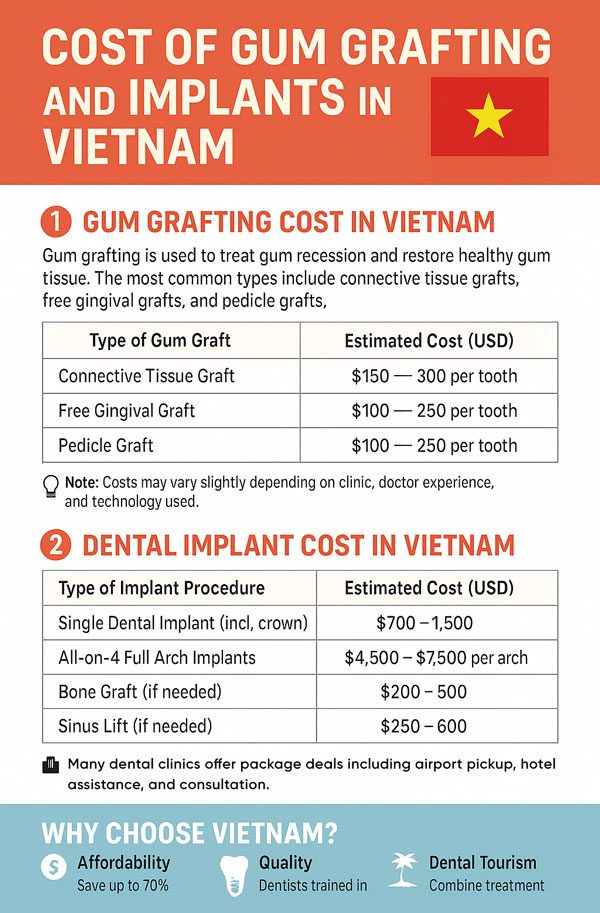
Breakdown of the Average Cost of Gingival Graft Depending on Technique and Severity
The cost of gingival graft varies widely based on several factors, including:
- Type of Graft: Free gingival grafts may cost less than connective tissue grafts.
- Geographical Location: Prices differ significantly depending on the country or city.
- Condition Severity: More complex cases requiring additional procedures may incur higher costs.
Generally, patients can expect to pay several hundred to a few thousand dollars, depending on the factors mentioned above.
Mention of Variables: Country, Clinic, Graft Type, Need for Sedation
In addition to the above, other variables influencing cost may include:
- The clinic’s reputation and experience level.
- The need for sedation and pain management can incur additional fees.
Negotiating and communicating with your dental office about financial options can offer more clarity about what’s involved.
If Applicable: How Gum Implant Cost May Be Combined with Dental Implant Packages
Some dental clinics may offer package deals that combine gum grafting with the placement of dental implants, which may help save costs. Always inquire about such packages when consulting about treatment options.
Is Gum Grafting Necessary Before Dental Implants?
Transitioning from gum grafting to dental implants requires understanding specific circumstances.
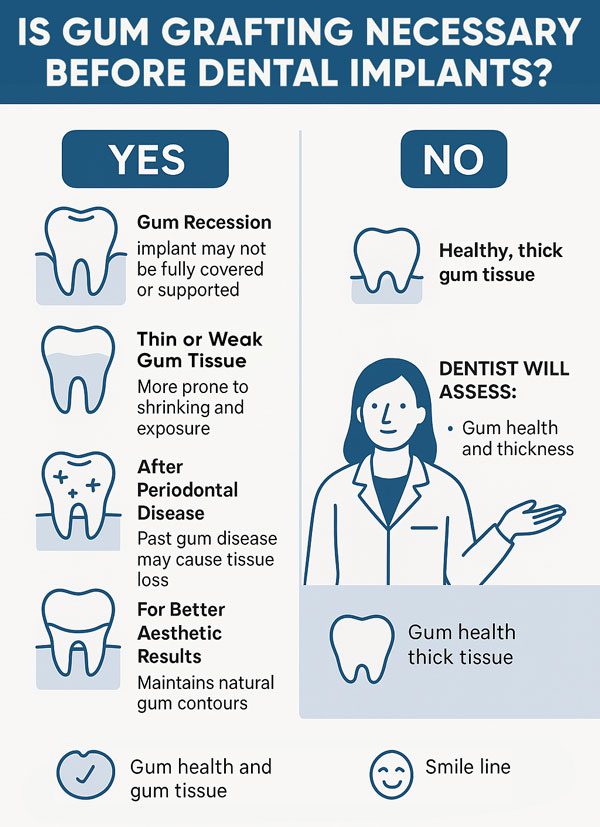
Discuss When and Why a Graft May Be Needed to Prepare the Site for Implants
Before placing dental implants, a sufficient gum structure is needed to ensure stability. In cases where gum disease has led to recession or loss of tissue, grafting becomes necessary to create a supportive environment for effective implant integration.
Importance of Healthy Gum Tissue for Implant Success
The success of dental implants significantly depends on the quality of the gum and bone tissues. Healthy gum tissues support the implant and serve as a barrier against bacterial infections. Thus, ensuring proper gum health through grafting may mean the difference between failure and long-term success.
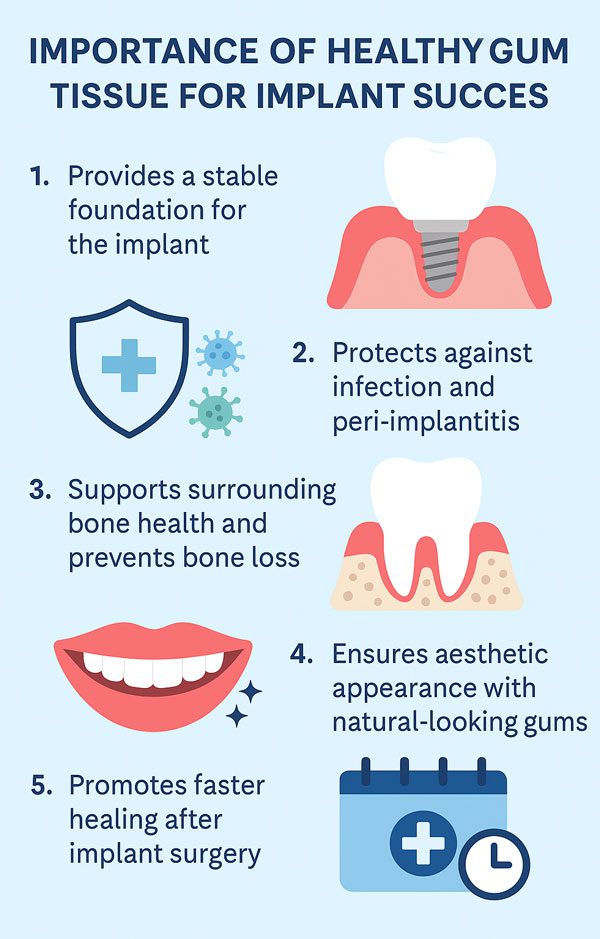
Real Patient Scenarios: Gum Loss from Brushing vs. Gum Disease
Consider two case studies:
- A patient who has lost gum tissue due to aggressive brushing requires precursory grafting to restore gum height before receiving implants.
- Another patient with advanced gum disease needs extensive grafting for restoration prior to implant placement.
Both scenarios illustrate the significance of assessing gum health early on.
Conclusion
In conclusion, dental grafting gum is a vital treatment for individuals dealing with issues like gum recession, particularly for those considering dental implants. Gum grafting procedures not only enhance the aesthetic aspects of one’s smile but also play a significant role in maintaining oral health and functionality. Whether through preventative or restorative approaches, the role of a qualified periodontist cannot be understated. It is essential for anyone facing gum health issues or considering implants to consult a periodontist for personalized treatment plans. As a proactive step, search “periodontics near me” or schedule a consultation to safeguard your smile for years to come.

 Google Reviews
Google Reviews Call
Call
SAIGON IMPLANT CENTER
Best dentist in Vietnam
Saigon Implant Center - Dental Clinic utilizes the latest technology for specialized treatment in the field of Single implant, full jaw implants, All on 4 implants, All on 6 implants, Zygoma implant....
SAIGON IMPLANT CENTER
Best dentist in Vietnam
Saigon Implant Center - Dental Clinic utilizes the latest technology for specialized treatment in the field of Single implant, full jaw implants, All on 4 implants, All on 6 implants, Zygoma implant....